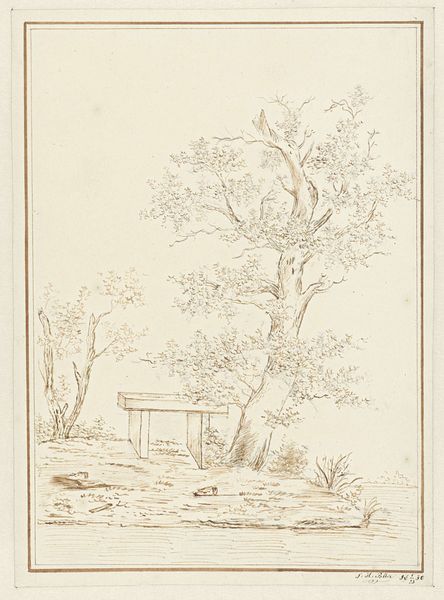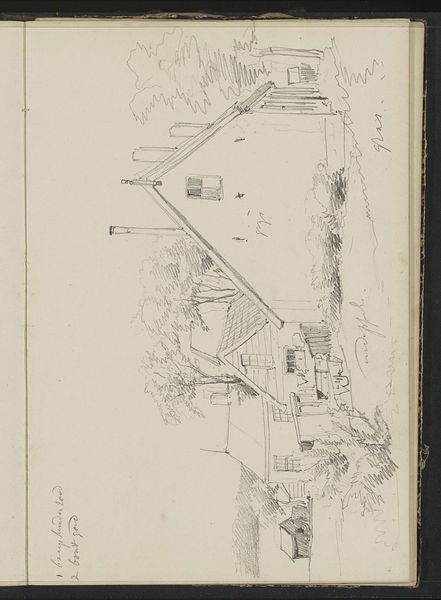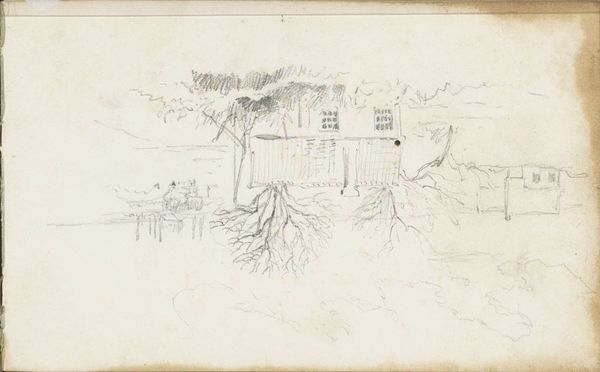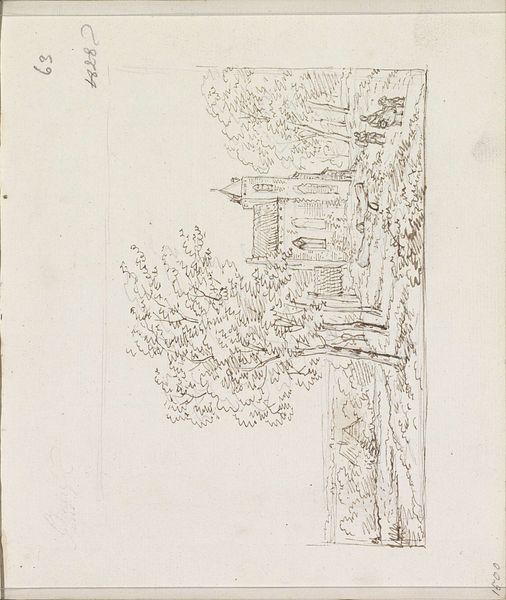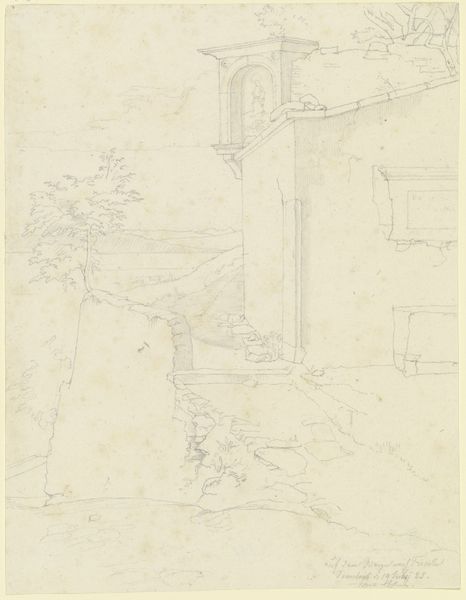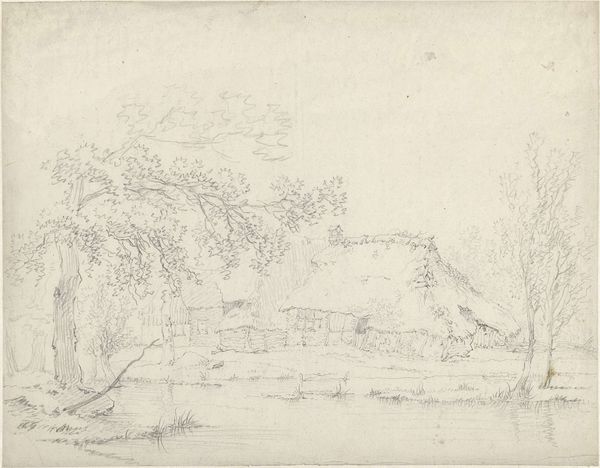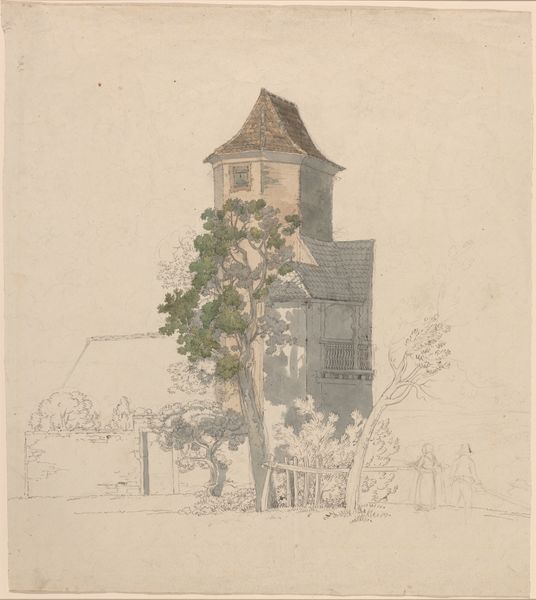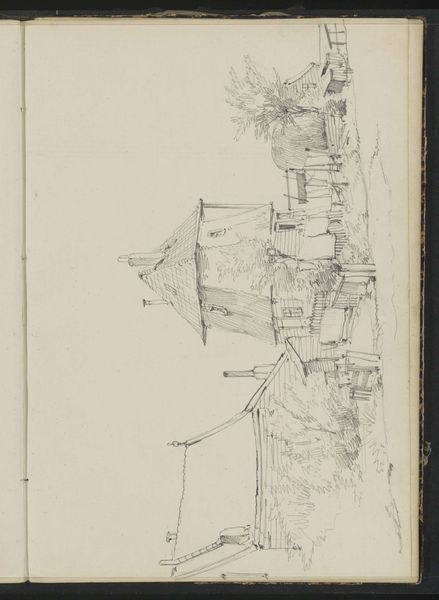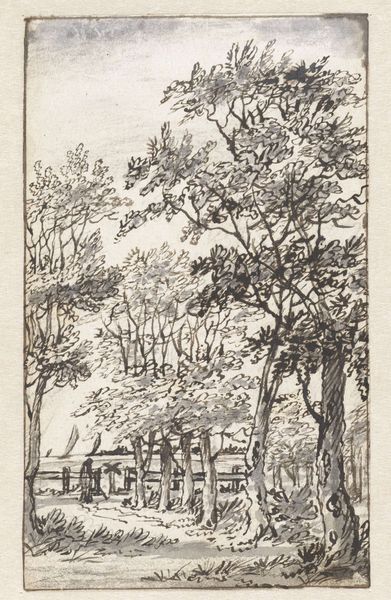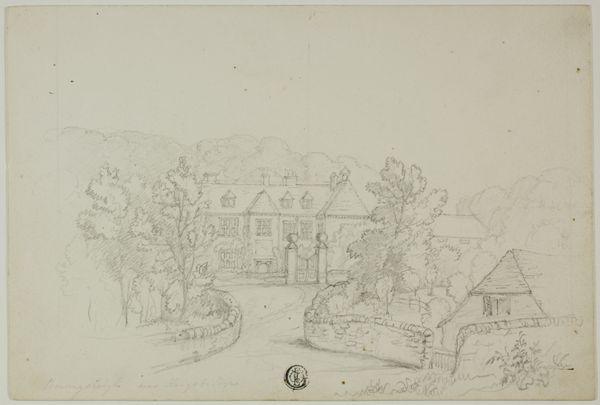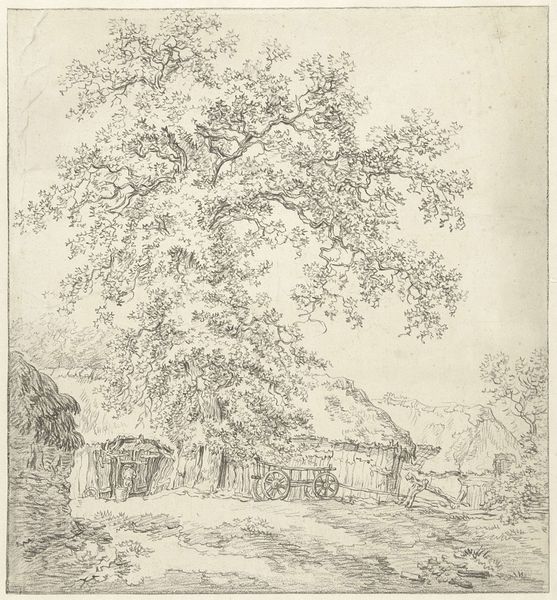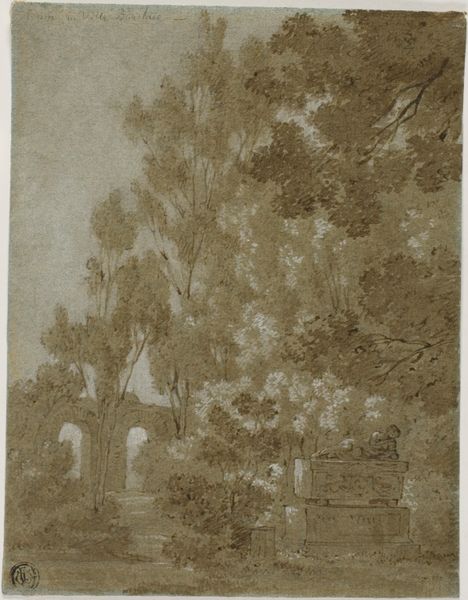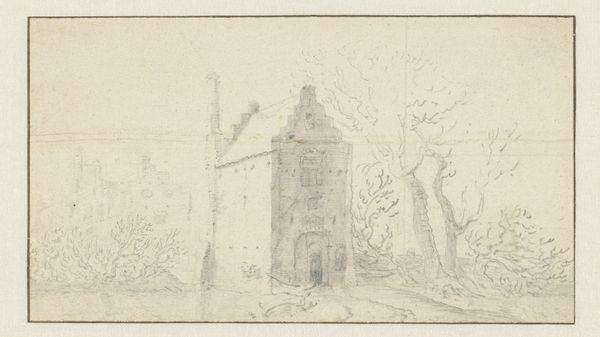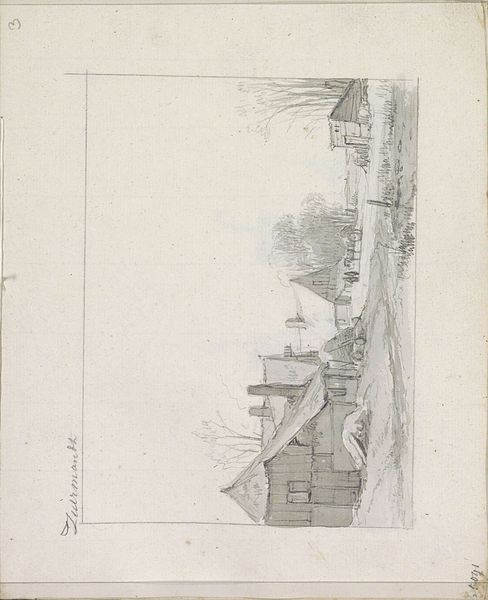
drawing, etching, pen
#
drawing
#
etching
#
landscape
#
etching
#
geometric
#
pen work
#
pen
Dimensions: height 231 mm, width 168 mm
Copyright: Rijks Museum: Open Domain
Curator: L.H. Büsé's work, likely created between 1830 and 1831, greets us: it's entitled "Landschap met geometrisch bouwwerk," translating to "Landscape with Geometric Structure," crafted with pen and etching techniques. Editor: Well, my immediate impression is of quietude. The stark geometric form of the building creates a compelling contrast with the fluidity of the landscape, and yet somehow evokes serenity rather than disharmony. Curator: The piece evokes a lot of themes for me, particularly around architecture. How, when integrated into landscapes, the clean geometry impacts social space: who can traverse, who gets to have sight lines... Also I can't ignore its use of space. I wonder how his racial and cultural positioning during that time period informs his relationship to it. Editor: Absolutely, one sees these influences present, but considered through formalist eyes, the geometry interacts with the organic tree in a balanced way. The artist employs negative space strategically, doesn't he, enhancing depth and guiding the viewer’s eye. Curator: Perhaps the deliberate integration signifies some attempt by the colonizing culture to assert control, yet the softness and irregularity with the landscape refuses the effort? I suppose it does leave one pondering, who is served, who is not? Editor: You see so much of external intent, whereas the shapes for me hold more interest, speaking in formal terms of line and depth; to use the terms from semiotics it allows us to deconstruct this system as an image of visual perception. Curator: The symbolism there goes deep—notions of home, and forced labor, or dispossession... and the relationship that communities had in relation. As Foucault noted regarding the architecture, it alludes back to broader discourses of social discipline, and the racial hierarchies present at the time. It all adds up. Editor: The texture from his mark-making enhances the appeal, its balance reflecting symmetry of thought, and considered space of an ordered landscape composition: one might see in terms of existentialism what man has sought from geometry and space, rather than ascribing intention of harm to befall mankind. I think it may be an invitation... Curator: So, as we start to unpack that initial impression it has certainly spiralled in very intriguing directions to assess these complexities, wouldn't you agree? Editor: I would, very thought-provoking; one is always led by the visual thread wherever it may take us!
Comments
No comments
Be the first to comment and join the conversation on the ultimate creative platform.
